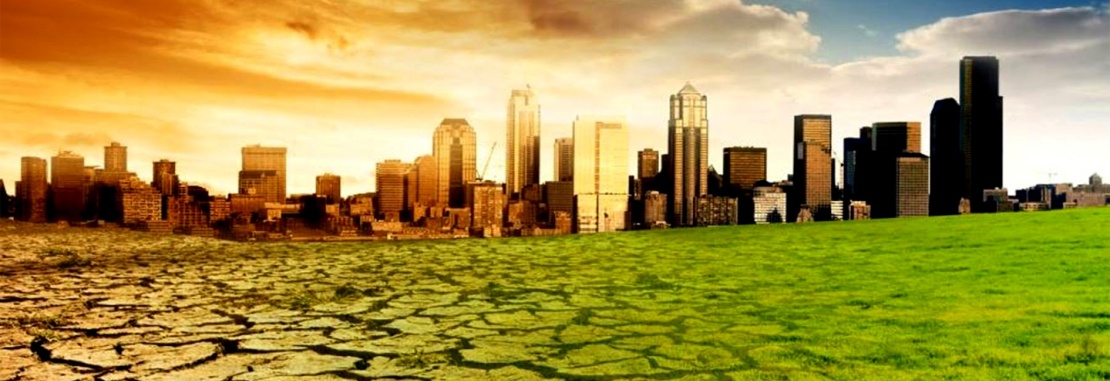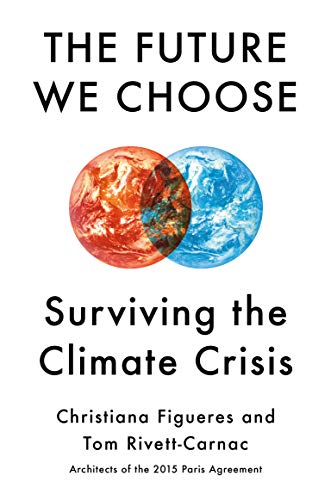Christiana Figueres and Tom Rivett-Carnac of Fast Company writes:
When we began the fight for the fate of humanity, we were thinking only about the species’ survival, but at some point, we understood that it was as much about the fate of our humanity. We emerged from the climate crisis as more mature members of the community of life, capable of not only restoring ecosystems but also of unfolding our dormant potentials of human strength and discernment. Humanity was only ever as doomed as it believed itself to be. Vanquishing that belief was our true legacy.
This is an excerpt from the new book The Future We Choose: Surviving the Climate Crisis, by Christiana Figueres and Tom Rivett-Carnac, who led negotiations for the United Nations in 2015’s Paris climate agreement. The book lays out two plausible scenarios for the year 2050: What happens if we fail to meet the targets of the Paris agreement, and what life is like if we succeed. This excerpt is the latter.
It is 2050. We have been successful at halving emissions every decade since 2020. We are heading for a world that will be no more than 1.5 degrees Celsius warmer by 2100.
In most places in the world, the air is moist and fresh, even in cities. It feels a lot like walking through a forest, and very likely this is exactly what you are doing. The air is cleaner than it has been since before the Industrial Revolution. You have trees to thank for that. They are everywhere. Every vacant lot, every grimy unused alley, has been repurposed and turned into a shady grove. Every rooftop has been converted to either a vegetable or a floral garden. Windowless buildings that were once scrawled with graffiti are instead carpeted with verdant vines.
Madrid made dramatic efforts to reduce the number of vehicles and create a “green envelope” around the city to help with cooling, oxygenating, and filtering pollution. Plazas were repaved with porous material to capture rainwater; all black roofs were painted white; and plants were omnipresent. The plants cut noise, released oxygen, insulated south-facing walls, shaded pavements, and released water vapor into the air. The massive effort was a huge success and was replicated all over the world. Madrid’s economy boomed as its expertise put it on the cutting edge of a new industry.
All homes and buildings produce their own electricity—every available surface is covered with solar paint that contains millions of nanoparticles, which harvest energy from the sunlight, and every windy spot has a wind turbine. In remote areas, the billion people who had no electricity at the start of the twenty-first century now have energy generated by their own rooftop solar modules or by wind-powered mini-grids in their communities.
Homes and buildings all over the world are becoming self-sustaining far beyond their electrical needs. For example, all buildings now collect rainwater and manage their own water use. Things that used to be done individually are now done communally – growing vegetables, capturing rainwater, and composting. In community gardens, on rooftops, at schools, and even hanging from vertical gardens on balconies, food sometimes seems to be growing everywhere. The most resource-depleting foods of all – animal protein and dairy products—have practically disappeared from our diets. But the plant-based replacements are so good that most of us don’t notice the absence of meat and dairy.
Extricating ourselves from self-destruction would have been impossible if we hadn’t changed our mindset and our priorities, if we hadn’t realized that doing what is good for humanity goes hand in hand with doing what is good for the Earth.
We are currently narrowing roads, eliminating parking spaces, and investing in urban planning projects that make it easier to walk and bike in the city. Parking garages are used only for ride-sharing, electric vehicle charging, and storage – those ugly concrete stacking systems and edifices of yore are now enveloped in green. Cities now seem designed for the coexistence of people and nature.
Extricating ourselves from self-destruction would have been impossible if we hadn’t changed our mindset and our priorities, if we hadn’t realized that doing what is good for humanity goes hand in hand with doing what is good for the Earth. The most fundamental change was that collectively—as citizens, corporations, and governments – we began adhering to a new bottom line: “Is it good for humanity whether profit is made or not?”
The climate change crisis of the beginning of the century jolted us out of our stupor. As we worked to rebuild and care for our environment, it was only natural that we also turned to each other with greater care and concern. We realized that the perpetuation of our species was about far more than saving ourselves from extreme weather. It was about being good stewards of the land and of one another.
What you can do about climate change, today
The authors of the new book ‘The Future We Choose,’ which outlines possible outcomes of the climate crisis, explain how you can make the choices today that will create the best possible world in 2050.
 The book presents a clear action plan for readers, beginning with a commitment to make climate your number-one political priority for the next decade, writing to elected officials today to inform them of that choice, and becoming active in local climate groups. (This shift is already happening; Democrats, for example, now rank climate as a key priority. The majority of Americans—6 in 10—now say that they are “alarmed” or “concerned” about climate change, triple the percentage of five years ago.) To reach a tipping point for political change, only a relatively small number of people need to be vocal.
The book presents a clear action plan for readers, beginning with a commitment to make climate your number-one political priority for the next decade, writing to elected officials today to inform them of that choice, and becoming active in local climate groups. (This shift is already happening; Democrats, for example, now rank climate as a key priority. The majority of Americans—6 in 10—now say that they are “alarmed” or “concerned” about climate change, triple the percentage of five years ago.) To reach a tipping point for political change, only a relatively small number of people need to be vocal.
Read more: What the World Could Look Like in 2050 If We Do Everything Right on Climate
 Greenroofs.comConnecting the Planet + Living Architecture
Greenroofs.comConnecting the Planet + Living Architecture






